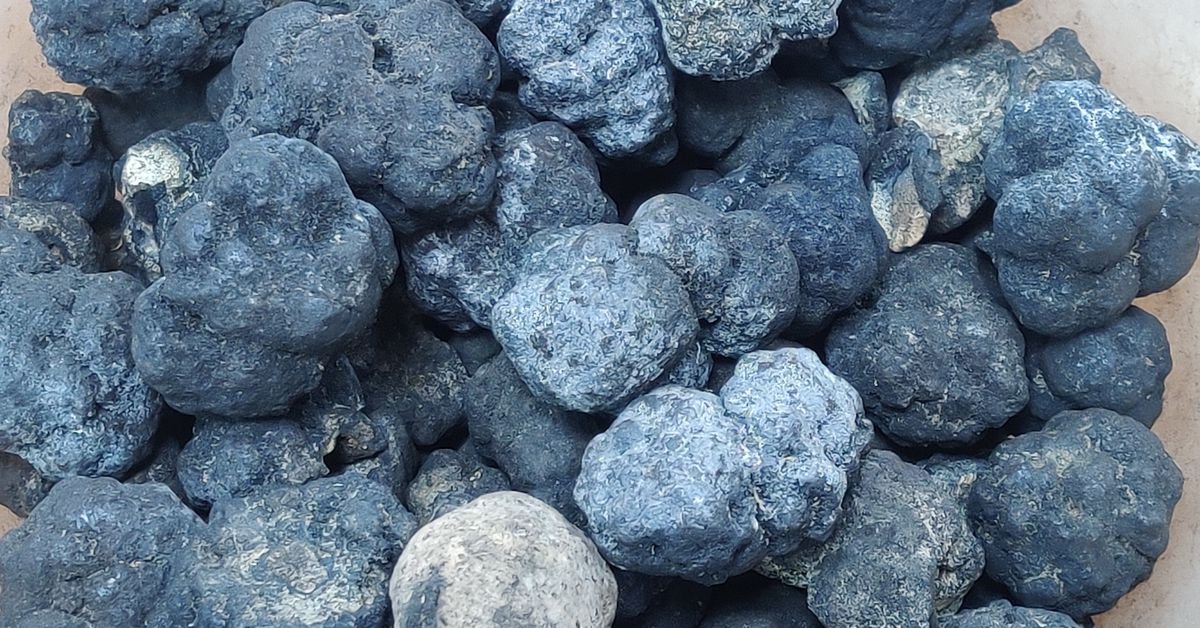[ad_1]
The discovery of “dark oxygen” in the ocean’s abyss is raising the stakes in negotiations over whether to mine the seafloor for battery materials — and how to protect sensitive marine life in the process.
Rules for deep-sea mining have been at the heart of talks during the International Seabed Authority’s (ISA) annual meetings in Kingston, Jamaica, that ended Friday. A mining company has already said that after the meetings end, it would submit the first-ever application to exploit minerals from the deep sea.
The company’s plans have triggered a race to get rules in place before any mining starts. But there’s so little that humans know about the deep sea that a growing chorus of scientists, advocates, and policymakers are sounding the alarm that there could be grave, unforeseen consequences. Evidence of mysterious “dark oxygen” from the abyssal seafloor was published in a prestigious journal in July. It raises new questions about the risks mining might pose to life at the bottom of the ocean that scientists are still trying to understand and is amplifying calls for a moratorium on mining.
“We are at a crossroads.”
“Today, we are at a crossroads. The decisions we make at this Assembly will shape the future health and productivity of our oceans for generations to come,” Palau President Surangel Whipps Jr. said in his opening statement during the ISA Assembly on July 29th. “Whether it is the undiscovered biodiversity that might unlock the cures for cancer, or the recent discovery just last week of ‘dark oxygen’ being produced in the deep ocean, by the nodules on the seafloor, we have so much to learn about the deep seabed and the vital role it plays for our planet.”
What is dark oxygen?
Oxygen is a product of photosynthesis. Plants and plankton use sunlight, water, and carbon dioxide to create sugars and oxygen. That’s what makes the discovery of dark oxygen at the bottom of the abyss, with depths between 9,842 to 21,325 feet (3,000 to 6,500 meters), so incredible — what’s down there that can produce oxygen without sunlight? A paper published in the journal Nature Geoscience last week suggests that there’s a completely different and previously unknown process for producing oxygen on Earth, and it comes from arguably the most unexpected of places.
The findings were so surprising the authors themselves were initially skeptical of their own data. They’d set out to document how much oxygen deep-sea organisms use up at the bottom of the Pacific Ocean, in an area between Hawaii and Mexico that companies are eyeing for mining. They’d sent landers down some 13,000 feet (4,000 meters) to take measurements in spaces closed off to outside currents that would typically bring oxygen from the surface of the sea. The method is sort of like placing a can upside down on the bottom of a pool and documenting what happens inside. They expected to see oxygen levels drop over time in the enclosed area, but they documented the opposite. Thinking something must be wrong with their sensors, they swapped out the equipment and yet kept getting similar readings. When they lifted those landers up, oxygen bubbled out.
They still don’t know for sure how the oxygen is produced. But they have a hypothesis. Polymetallic nodules rich in nickel, copper, cobalt, iron, and manganese are strewn across the seafloor — exactly what mining companies are interested in exploiting and have even described as “batteries in a rock.” They might just be able to produce enough of an electrical charge to split seawater, releasing oxygen through electrolysis.
There’s a lot more research to be done to test that hypothesis. The authors of the paper were taking oxygen readings and weren’t looking for higher levels of hydrogen — which you’d expect to see if these rock batteries are actually capable of splitting water. They brought some nodules up to land to see if they could replicate the process in a lab. That’s how they were able to rule out other possibilities like microbes producing dark oxygen. Again, the results were surprising.
“The readings were off the chart.”
“I had approached the problem from the perspective of, you know, there’s no way that these things have this high voltage … and the readings were off the chart,” says Franz Geiger, one of the authors of the paper and a professor of physical chemistry at Northwestern University.
The team documented voltage as high as around 950 millivolts — just shy of the 1.3 to 1.5 volts that would be needed to split seawater or at least get an oxygen-producing half-reaction — called an oxygen evolution reaction. Out in the ocean where there are vast networks of nodules, the voltage might get high enough to trigger those reactions, they hypothesize.
The research was funded in part by The Metals Company (TMC), the same company planning to apply for a license to start deep-sea mining. The company says it’s conducting “one of the most comprehensive deep-sea research programs in history,” spending more than $200 million on environmental assessments. But now, they’re disputing the findings of the paper published in Nature Geoscience last month — picking a fight with researchers whose findings might not jive with the company’s claim that mining the ocean’s abyss would be a less harmful alternative to mining on land.
When The Verge reached out to the company, it pointed us to a statement it released saying it was “surprised to see the questionable paper” published. The company says it’s still “preparing a comprehensive rebuttal” but is so far questioning the researchers’ “flawed” methods in part because the data was “collected under conditions not representative” of the seafloor area where it’s interested in mining. It also says that the paper contradicts other studies and was rejected by other journals.
The research team stands by its work. “We were the worst critics of this paper for a long time. For eight years I discarded the data showing oxygen production, thinking my sensors were faulty. Once we realized something may be going on, we tried to disprove it, but in the end we simply couldn’t,” lead author Andrew Sweetman, a professor at the Scottish Association for Marine Science, says in his own statement responding to The Metals Company.
Why there still aren’t rules for deep-sea mining
Dark oxygen has already made waves in Kingston, observers who attended the ISA meetings with advocacy groups and intergovernmental delegations tell The Verge. Delegations representing several countries have brought the research up in their opening statements, and there’s reportedly also talk of the research in negotiation rooms and at side events. “It has come up quite a lot along the corridors as well,” says Pradeep Singh, an expert on ocean governance and a fellow at the Research Institute for Sustainability at Helmholtz Centre Potsdam.
Unsurprisingly, it’s spurring calls to pump the brakes on mining. “The significance [of this research] can’t be overestimated,” says David Santillo, a marine biologist and senior scientist at the Greenpeace Research Laboratories based at the University of Exeter. Greenpeace is one of the environmental groups opposing deep-sea mining. “Clearly, it’s going to have implications also for the natural systems and the processes on which not just deep sea ecosystems depend, but on which the whole planet depends. We know the value and the importance of oxygen as an element on Earth,” Santillo says.
So far, 32 countries have expressed support for either an all-out ban, moratorium, or “precautionary pause” on deep-sea mining either until there are rules in place to prevent unnecessary harm or until there’s a better understanding of what mining might disturb. That includes five new countries joining the cause during this year’s ISA meeting.
The ISA missed a key deadline last year to craft rules — two years after the island nation of Nauru sent everyone into a tizzy by announcing that it would sponsor The Metals Company’s deep-sea mining aspirations. That’s what enables TMC to apply for a mining license now.
Whether the ISA will give TMC the green light if it applies this year is another story. Though it missed its initial deadline, the ISA set out an aspirational timeline for getting rules in place by 2025. The ISA Council also put out language at last year’s negotiations saying commercial mining shouldn’t move forward until those rules are set in place, although that’s not necessarily a legally binding decision. So there’s still a push to put a more official moratorium in place and also to establish a more general conservation policy under the ISA for protecting marine environments.
The ISA also voted in a new secretary-general on Friday, replacing one who faced allegations of getting too cozy with mining companies with an oceanographer who will become the first scientist to hold the post. For now, it looks like there are still too many disagreements among delegates on what rules should look like for the ISA to hit its 2025 goal, observers tell The Verge. “They are really far apart on issues of who’s going to pay for damage if it happens? How much liability would the damage incur? Would they simply be required to clean up the mess, if indeed that was even possible?” says Matthew Gianni, who cofounded the Deep Sea Conservation Coalition now calling for a moratorium.
Geiger, the study author, isn’t convinced the world may be able to avoid deep-sea mining forever, especially as electric vehicles and renewable energy drive up demand for battery materials. “The materials are needed, there’s absolutely no question about it. So we may be forced sooner or later to take this step as a society. This work, we hope, informs where and when and how often to do this with the minimized impact on the ecology down there,” he says.
“It’s not like you can wait 100 million years and have these nodules grow back. Once you take them out, they’re gone.”
[ad_2]
Source link





